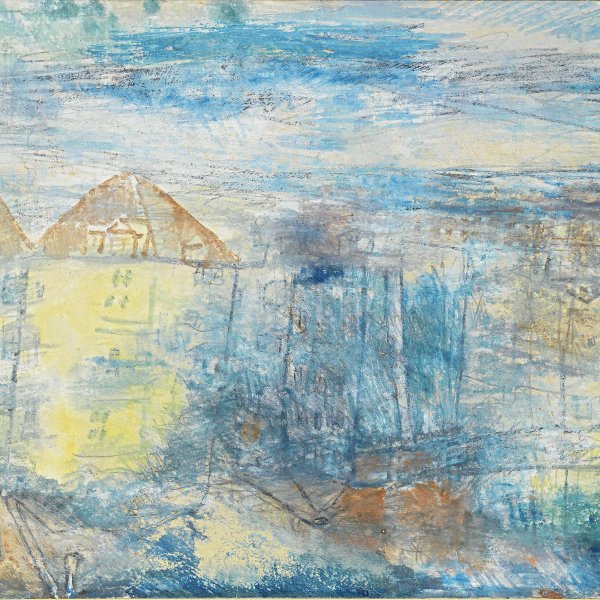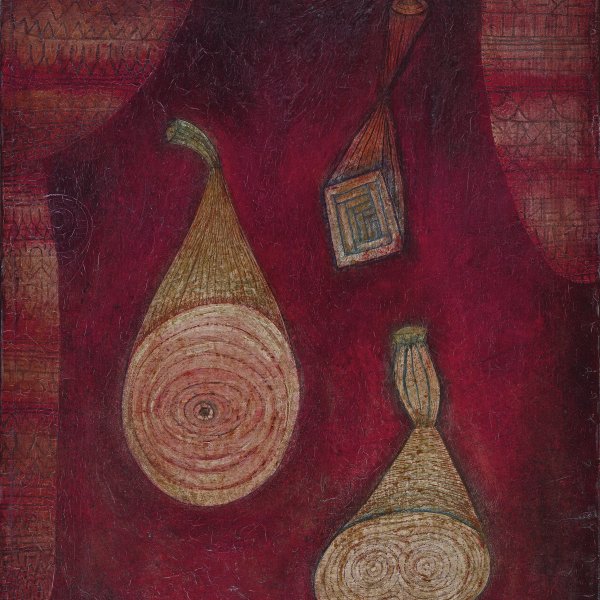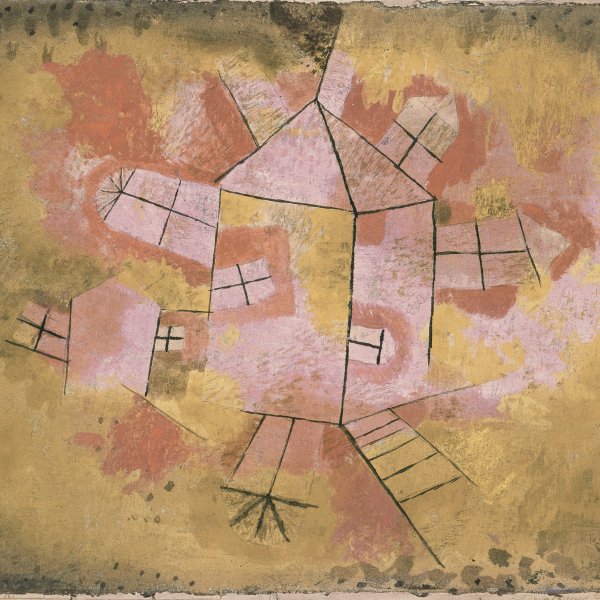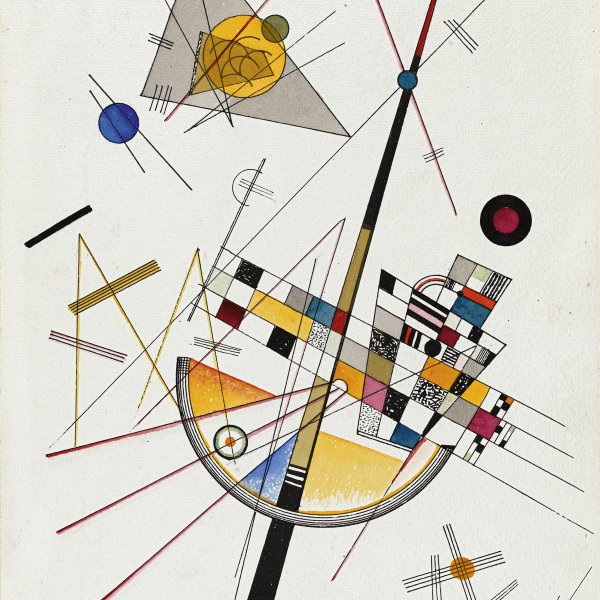Still Life with Dice, 1923, 22
1923
Watercolour, chalk and ink on paper mounted on cardboard.
27 x 38 cm
Museo Nacional Thyssen-Bornemisza, Madrid
Inv. no.
621
(1963.5
)
Not on display
Level 2
Permanent Collection
Level 1
Permanent Collection
Level 0
Carmen Thyssen Collection and Temporary exhibition rooms
Level -1
Temporary exhibition rooms, Conference room and EducaThyssen workshop
Paul Klee cut up many of his works into pieces, which he reused, inverted or joined to others, immediately converting them into completely new compositions. Still Life with Dice is a good example of this manipulation, as it is a fragment of Puppet Theatre, a large vertical watercolour.
The composition which, as its name indicates, is an abstracted still life, attests to the painter’s interest in the theories of colour and its gradations and in establishing equivalences between colour ranges and musical notes, influenced by the writings of Goethe, Runge and Delacroix. Klee had discovered colour in 1914 during his revealing trip to Tunisia with his friend August Macke. Both artists had been connected with Der Blaue Reiter and had gone through a phase of admiring Kandinsky. They were also both friends of Delaunay, who had aroused their interest in the laws and possibilities of colour. Nevertheless, whereas Macke had always been a great colourist, Klee had not. He hailed from the world of graphic illustration and the colour he discovered during his African trip provided his art with the essential ingredient it lacked.
Klee painted this watercolour during the period he was most closely linked to the Weimar Bauhaus, which was possibly the most fruitful moment in his artistic career. Both his teachings and his painting, based on the study of nature, had attained significant influence and his fame began to spread internationally. In his lessons on colour and form he firmly shunned the traditional notions of reality in favour of a metaphysical approach to perception. He wrote in Creative Credo that “today we reveal the reality that is behind visible things, thus expressing the belief that the visible world is merely an isolated case in relation to the universe and that there are many more other, latent realities.”
Paloma Alarcó
The composition which, as its name indicates, is an abstracted still life, attests to the painter’s interest in the theories of colour and its gradations and in establishing equivalences between colour ranges and musical notes, influenced by the writings of Goethe, Runge and Delacroix. Klee had discovered colour in 1914 during his revealing trip to Tunisia with his friend August Macke. Both artists had been connected with Der Blaue Reiter and had gone through a phase of admiring Kandinsky. They were also both friends of Delaunay, who had aroused their interest in the laws and possibilities of colour. Nevertheless, whereas Macke had always been a great colourist, Klee had not. He hailed from the world of graphic illustration and the colour he discovered during his African trip provided his art with the essential ingredient it lacked.
Klee painted this watercolour during the period he was most closely linked to the Weimar Bauhaus, which was possibly the most fruitful moment in his artistic career. Both his teachings and his painting, based on the study of nature, had attained significant influence and his fame began to spread internationally. In his lessons on colour and form he firmly shunned the traditional notions of reality in favour of a metaphysical approach to perception. He wrote in Creative Credo that “today we reveal the reality that is behind visible things, thus expressing the belief that the visible world is merely an isolated case in relation to the universe and that there are many more other, latent realities.”
Paloma Alarcó









